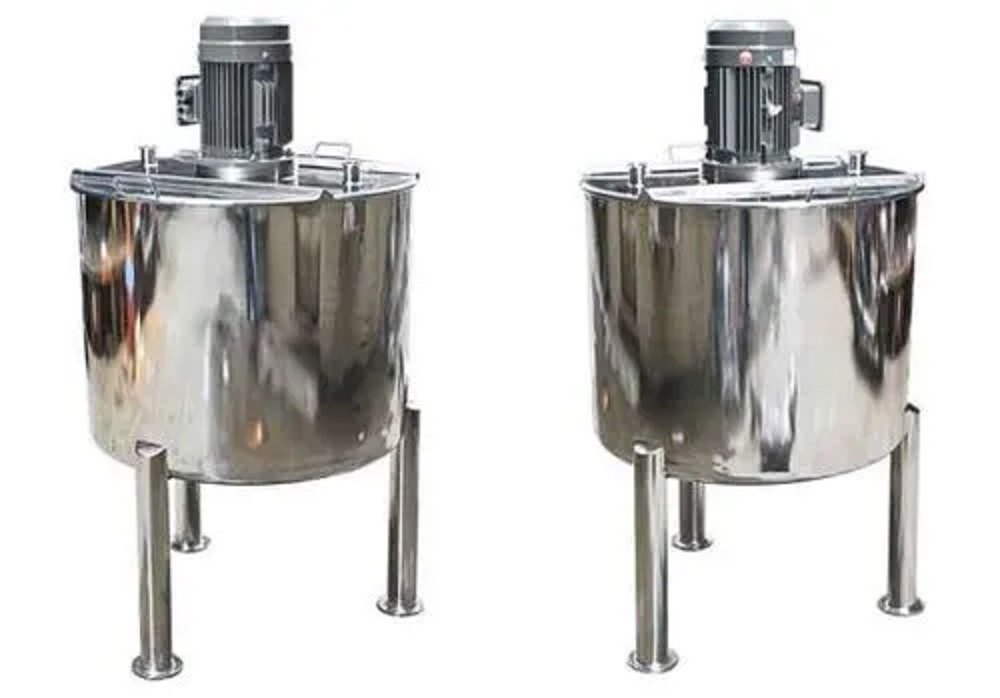Mixing tanks play a vital role in various industries, including food processing, pharmaceuticals, chemicals, and cosmetics. One of the most critical factors in ensuring efficient mixing and maintaining product quality is temperature control. Proper temperature regulation in a mixing tank helps prevent unwanted reactions, ensures uniformity, and enhances the overall efficiency of the mixing process. This article explores the best practices for mixing tank temperature control, highlighting the key aspects to consider for optimal performance.
Understanding the Importance of Temperature Control
Temperature control in a mixing tank is essential for several reasons. It helps maintain product consistency, prevents overheating or underheating, and ensures that chemical reactions occur within the desired range. In industries like pharmaceuticals and food production, precise temperature control is necessary to maintain product safety and compliance with regulatory standards. Additionally, managing temperature effectively can improve energy efficiency, reducing operational costs in the long run.
Selecting the Right Heating and Cooling System
Choosing an appropriate heating or cooling system for a mixing tank depends on the type of material being processed, the required temperature range, and the duration of mixing. Some of the common systems used for temperature control in mixing tanks include:
- Jacketed tanks: These tanks have an outer layer where heating or cooling fluids circulate to regulate the temperature inside the tank.
- Coil heating or cooling: Internal or external coils filled with heated or chilled fluids can help maintain the desired temperature.
- Direct steam injection: Used for rapid heating, steam is directly introduced into the liquid inside the tank.
- Chillers and heat exchangers: These are commonly used in industries requiring precise temperature control for sensitive materials.
Each of these systems has its advantages, and the choice depends on the industry’s specific needs.
Monitoring and Automation for Temperature Control
Manually monitoring temperature can be challenging and may lead to inconsistencies. Implementing an automated temperature control system ensures precision and reduces human error. Some of the key components of an automated system include:
- Temperature sensors: These devices continuously monitor the temperature inside the tank, providing real-time data.
- Programmable logic controllers (PLCs): These are used to automate the heating and cooling processes, ensuring accurate temperature adjustments.
- Insulated tanks: Proper insulation helps maintain temperature stability and reduces energy consumption.
- Alarm systems: Alerts can notify operators of any temperature fluctuations that could impact the mixing process.
By incorporating automation, industries can maintain consistent quality while optimizing energy usage.
Preventing Temperature Fluctuations
Temperature fluctuations can cause several issues, including product inconsistencies, inefficient mixing, and equipment wear. To prevent these fluctuations, follow these best practices:
- Use precise control systems: Investing in advanced temperature controllers can help maintain stability throughout the mixing process.
- Regularly calibrate sensors: Ensuring that temperature sensors are correctly calibrated helps maintain accuracy in readings.
- Optimize mixing speed: Agitation speed affects heat distribution, so adjusting the speed appropriately can improve temperature control.
- Maintain proper fluid levels: Keeping the tank filled to the recommended levels ensures efficient heat transfer.
By addressing these factors, temperature stability can be improved, reducing the risk of product defects.
Energy Efficiency in Temperature Control
Managing energy consumption in temperature control is essential for cost-effective operations. Some ways to improve energy efficiency include:
- Using energy-efficient heating and cooling systems: Modern equipment with high thermal efficiency can reduce energy waste.
- Implementing heat recovery systems: Capturing and reusing excess heat can lower energy costs.
- Reducing heat loss with insulation: Properly insulated tanks and pipes minimize temperature fluctuations and conserve energy.
- Optimizing batch processing: Running batches at optimal times can reduce the need for frequent heating and cooling cycles.
By focusing on energy efficiency, industries can achieve better temperature control while minimizing operational expenses.
Cleaning and Maintenance for Effective Temperature Control
Proper maintenance of mixing tanks and their temperature control systems ensures longevity and efficiency. Best practices for cleaning and maintenance include:
- Regularly inspecting heating and cooling systems: Checking for leaks, corrosion, or malfunctions helps prevent temperature inconsistencies.
- Cleaning temperature sensors and probes: Residue buildup can affect sensor accuracy, leading to incorrect temperature readings.
- Flushing heat exchange systems: Periodic cleaning of heat exchangers and coils prevents blockages that can reduce efficiency.
- Replacing worn-out components: Timely replacement of faulty parts ensures that the temperature control system functions optimally.
A proactive maintenance strategy minimizes downtime and keeps the mixing process running smoothly.
Industry-Specific Considerations
Different industries have unique requirements for temperature control in mixing tanks. For example:
- Food and beverage industry: Requires precise temperature control to prevent bacterial growth and maintain product consistency.
- Pharmaceutical industry: Strict regulations demand accurate temperature control for drug formulation.
- Chemical industry: Certain chemicals require specific temperature ranges to prevent hazardous reactions.
- Cosmetics industry: Temperature stability ensures uniformity in creams, lotions, and other beauty products.
Understanding industry-specific needs allows for better selection of temperature control methods.
Conclusion
Effective mixing tank temperature control is crucial for ensuring product quality, energy efficiency, and process consistency. By selecting the right heating and cooling systems, implementing automation, preventing temperature fluctuations, and maintaining equipment properly, industries can optimize their mixing processes. Whether in food production, pharmaceuticals, or chemical processing, maintaining proper temperature control enhances efficiency and helps meet regulatory requirements. Adopting best practices in temperature management ensures reliable performance and long-term operational success.
